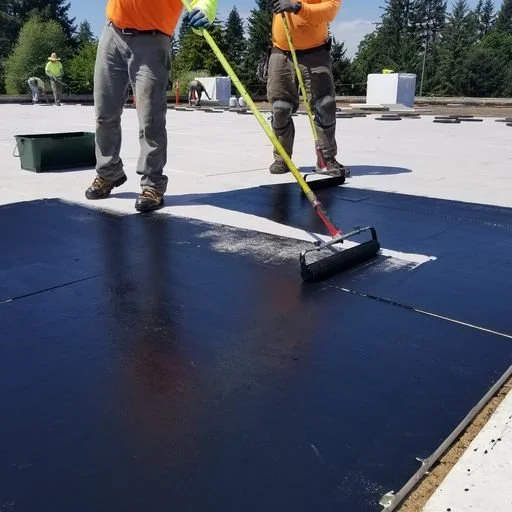How the Living Architecture Performance Tool Can Advance Social Equity
Advertisement
Our urban planning and development systems have historically placed an undue burden on disadvantaged communities - especially people of color. According to the Natural Resources Defence Council, “people who live, work and play in America's most polluted environments are commonly people of color and the poor. Environmental justice advocates have shown that this is no accident. Communities of color, which are often poor, are routinely targeted to host facilities that have negative environmental impacts—say, a landfill, dirty industrial plant or truck depot”.
Poor communities tend to experience worse air and water quality, higher temperatures, greater flood risk, more limited access to fresh and healthy food, less tree canopy, fewer parks and open space, and below average opportunities for local employment and education. Additionally, these communities are often victims of top-down decision-making processes. They may not have the social and political power to fight back against detrimental developments that wealthier and whiter communities enjoy.
Living architecture, in the form of green roofs and walls, provides an opportunity to bring more nature into our cities, along with the many ecosystem services and other benefits that natural systems provide, such as a reduction in air pollution and the urban heat island. Living architecture also offers us an opportunity to right some of these historical injustices, make targeted investments, and meaningfully engage the communities in which these projects are built.
LAPT Platinum: East Building Addition, Adlai E. Stevenson High School, Linconshire, IL. Photo Courtesy Wight and Company, Omni Ecosystems, and Nedlaw Living Walls
The Green Infrastructure Foundation has developed the Living Architecture Performance Tool (LAPT) to certify that green roofs and walls are designed to achieve certain measurable and replicable performance benefits for owners and communities. By mandating the use of design, construction, and maintenance best practices in the LAPT, we can leverage green roof and wall investments to achieve not just environmental and economic goals - but also social ones.
Advertisement
The LAPT has a wide range of potential audiences and uses:
Designers and building owners can use it as a best practice tool or design guideline to optimize the breadth and depth of green roof and wall benefits. By demonstrating the linkages between benefits and encouraging holistic thinking, it is possible to obtain many additional benefits without significantly increasing cost or difficulty of many projects.
Policy makers can use the LAPT as a decision-support tool to optimize incentives, mandates, or grant programs - ensuring that policies that promote green roofs and walls actually achieve the intended performance benefits.
Manufacturers of green roof systems or other accessories can use the LAPT as a guide to design products that use more sustainable materials and that achieve higher levels of performance.
The LAPT is a performance framework that contains 30 credits across 8 performance areas. Several of these credits are specifically designed to provide enhanced social benefits, including the following:
1.1 Integrated Design Process: mandates the use of an integrated design process, where experts from all building and site disciplines are engaged, and programming and design objectives are developed through an open, inclusive process with all potential stakeholders. This is mandatory.
1.2 Stakeholder and Community Engagement: encourages broad participation in the design process from all stakeholders, and provides additional credit for developing an Environmental and Social Justice plan or for involving priority-population in design or programming via community organization partnerships, multi-faceted outreach, approaches to equal involvement, and/or participatory budgeting.
5.1 Biophilic Design - Visibility: encourages projects to maximize their biophilic impact by optimizing visibility from occupied spaces within a building and adjacent structures and spaces.
5.2 Biophilic Design - Accessibility: encourages physical access to projects, providing additional credit for projects accessible to building occupants and the public, and for the provision of space designed for both quiet respite and social interaction.
5.3 Food Production: encourages the production of food on green roofs and walls, and provides additional credit for projects that engage the public to provide education on food production.
6.5 Equity-Focused Sourcing and Hiring: encourages buying and hiring practices that foster greater engagement of disadvantaged communities to achieve downstream social and economic benefits. This includes buying materials and equipment that has pro-equity upstream and supply-chain effects (e.g. local suppliers), and advancing economic justice via priority hire, project labor agreements, apprenticeships, and/or awarding contracts to social enterprises, minority and women owned businesses, and community-based organizations that advance economic justice.
7.4 Education: encourages the provision of knowledge on the living architecture and its contributions to the built environment, using a combination of signage, web-based information, tours, and other methods, with additional credit provided for partnerships with non-profit or educational organizations.
Advertisement
Green roofs and walls designed using the LAPT as a framework can maximize the social impact of these projects, engage the community, and support environmental and social justice initiatives, all while providing a broad range of additional benefits to building owners and occupants, communities, regions, and the planet. It's important that we maximize the social and health related community benefits that are possible through green roof and wall investment and the LAPT is a tool that supports this objective.
The Green Infrastructure Foundation is seeking interested designers, building owners, and other professionals to submit projects for certification under v.1 of the LAPT. Certification is done by an independent group of experts and only costs between $1,500 and $2,500 per project, depending on its size - a cost significantly lower than certification in comparable programs.
Rohan Lilauwala is Program Manager at Green Roofs for Healthy Cities and the Green Infrastructure Foundation. Email him at rlilauwala@greenroofs.org
More Information
Learn about the certification process, benefits and cost, or download a copy of the framework.





